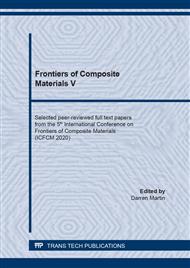p.47
p.57
p.69
p.75
p.81
p.89
p.95
p.101
p.107
Evaluation Carbonation Service Life of Mortar-Coated Concrete Considering Global Warming
Abstract:
Mortar finishing is frequently used to improve the carbonation service life of structural concrete. Moreover, carbonation is aggravated due to global warmings, such as the increase of CO2 concentration and temperature. This study shows a probability-based approach for evaluating the carbonation service life of coated concrete considering global warming. First, a carbonation model is proposed for assessing the carbonation depth of concrete with mortar finishing. The effect of global warming on carbonation is considered in the carbonation model. Second, a probability-based method is employed to determine the carbonation service life considering the thickness and mixtures of mortar finishing and substrate concrete. Based on the statistical analysis of calculation results, we find that for a concrete structural with 50 years’ service life, 15% service life will be reduced due to global warming.
Info:
Periodical:
Pages:
95-100
Citation:
Online since:
August 2021
Authors:
Price:
Сopyright:
© 2021 Trans Tech Publications Ltd. All Rights Reserved
Share:
Citation:


